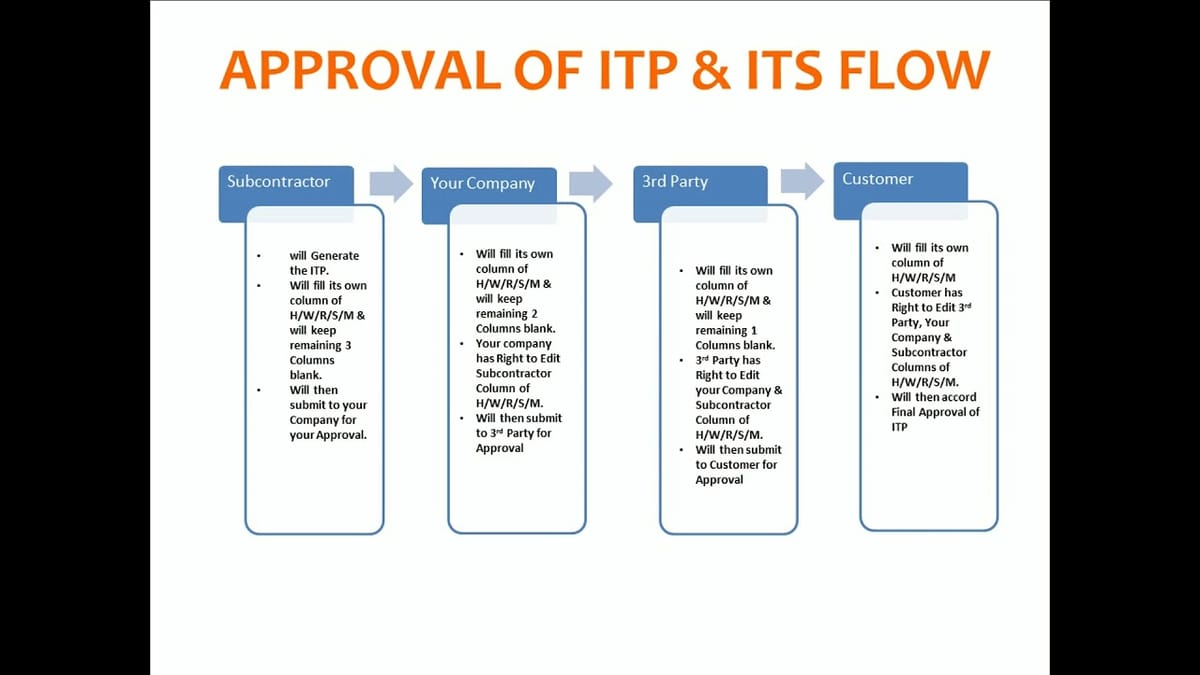What the Hilmer Report Is (and Why You Should Care)
Back in 1993, the Commonwealth government asked Professor Fred Hilmer and his review panel to look at how competition could be used as a tool to lift Australia’s economic performance. Their final report—the National Competition Policy Review (embedded above)—set the groundwork for reforms that still shape how households, councils, and businesses interact today.
At its heart, the Hilmer Report argued that effective competition isn’t just about lower prices for consumers; it’s about encouraging efficiency, productivity, and innovation across the economy.
Where markets are working well, competition can drive down costs, improve service quality, and push providers to be more responsive.
Where markets are not working—because of monopolies, restrictive regulations, or outdated government practices—the report called for reforms to “open things up” in a structured, fair way.
For homeowners, this matters alot because many of the services you rely on—electricity, water, approvals, council services, even the materials supply chain—have been influenced by these reforms.
Think about:
- Why you can choose your electricity retailer (but not your poles and wires).
- Why councils can’t just subsidise their own business units to undercut private builders or certifiers.
- Why monopoly pricing (like utility connection charges) is subject to oversight.
The Hilmer framework discusses that competition should be the rule unless there’s a clear and transparent reason for something else (like safety, environmental protection, or equity).
The Report was careful to say competition is not an end in itself. It has to be balanced against other social objectives.
But the default position was that competition should apply broadly, across industries, unless exempted for good reason. That default position still drives policy decisions today .

The Six Big Levers of Competition Policy—Translated for Housing
The Hilmer Report broke competition policy into six main levers.
Think of these like the tools government uses to make sure markets work fairly and efficiently. On paper, they’re broad and economy-wide, but each one has a ripple effect that touches your home build or renovation.
1. Rules Against Anti-Competitive Conduct
Hilmer said one set of rules should apply to everyone—big or small, private or public. These rules target behaviours like price-fixing, market sharing, or misuse of market power.
Homeowner perspective: In building, this means suppliers or trades can’t legally collude to keep prices high or shut out new entrants. If you see everyone quoting the exact same figure, competition law is meant to keep that in check.
2. Reform of Restrictive Regulations
The report argued that regulations should be reviewed. If a law restricts competition, it should only stay if there’s a strong public interest case.
Homeowner angle: Licensing and approval processes are necessary for safety and NCC compliance—but when rules go further than needed, they can add cost and delay. For example, duplicating paperwork between state and local agencies.
3. Structural Reform of Public Monopolies
Hilmer called for breaking up public monopolies where parts of the service could be competitive.
Homeowner angle: This is why electricity generation is separate from transmission and distribution. You can pick your energy retailer, but not the local poles and wires.
Splitting the functions creates choice in areas where competition is possible.
4. Third-Party Access to Essential Facilities
Some infrastructure is too expensive to duplicate—like electricity grids, rail lines, or water pipes. Hilmer proposed rules so third parties can access these networks on fair terms.
Homeowner angle: Developers and builders rely on these connections. An access regime means smaller players can connect without being locked out or gouged by the monopoly owner.
5. Prices Oversight Where Competition Is Weak
Where real competition doesn’t exist, Hilmer recommended targeted prices surveillance. This isn’t blanket price-setting, but monitoring to stop abuse of monopoly power.
Homeowner angle: Utility connection fees or development charges often fall into this category. Oversight helps prevent unjustified price spikes.
6. Competitive Neutrality
When government businesses compete with private firms, they shouldn’t get hidden subsidies or tax breaks. Hilmer argued they should face the same rules and costs.
Homeowner angle: If your council offers building certification or maintenance services, neutrality is meant to ensure they don’t undercut private providers just because they don’t pay rates or taxes.

“One Australia” Market Logic and the Push for Universal Rules
The Hilmer Report made a big point:
Australia should operate as one national market, not a patchwork of state-by-state rules.
At the time, competition law only applied in certain areas, and exemptions or state-level differences created gaps. Hilmer’s team argued that a single, economy-wide set of conduct rules would give businesses and consumers clarity, efficiency, and fairness.
For homeowners, the idea is simple: fewer inconsistencies mean fewer surprises. If you’re building in Brisbane today and moving to Melbourne tomorrow, you don’t want to find out that the rules for approvals, utility access, or service charges are completely different.
Consistent national rules reduce red tape and help you understand what to expect, no matter where you build.
Of course, Hilmer didn’t suggest abolishing state responsibilities—planning and building approvals remain state and local matters. But the principle was clear: when it comes to competition, uniform rules are better for everyone.

Limits on “Special Treatment”—Exemptions, the Crown, and State Laws
One of the sharpest parts of the Hilmer Report was its focus on who gets left out of the rules.
At the time, some players—especially government businesses—could claim they were shielded by the Crown, meaning competition laws didn’t fully apply to them.
Hilmer argued that if a government entity was acting like a business, it should be treated like one.
Exemptions Under the Microscope
The report pushed for exemptions from competition rules to be rare, transparent, and justified. Too many carve-outs, it said, weaken the entire policy framework.
Homeowner connection: If your local council runs a business unit—say for inspections, certification, or maintenance—you should be able to trust it competes on fair terms. If it’s protected by special laws, you might face higher prices or fewer choices than if genuine competition was allowed.
The “Shield of the Crown”
Historically, government agencies often argued that they were immune from general competition rules.
Hilmer challenged this, saying immunity should only apply to activities carried out under clear government policy (like law enforcement), not when the government is running services or trading in the market.
Homeowner connection: This principle is why a council or state authority offering services today usually has to play by the same market conduct rules as private providers. It limits the chance that public monopolies can unfairly edge out competition.
State Laws and Authorisations
Hilmer also noted that Commonwealth and State governments sometimes authorised conduct that would otherwise breach competition rules. The review called for consistency—authorisations should be tested against a clear public interest standard.
Homeowner connection: For example, building or planning rules may restrict competition in the name of safety or amenity. That can be valid, but the reasoning should be clear and defensible, not just “that’s how we’ve always done it.”

Reforming Regulations That Restrict Competition (Without Harming Safety)
Hilmer argued that many regulations restrict competition—sometimes for good reason, sometimes not.
His principle was simple: if a rule restricts competition, it should only remain if there’s a clear and transparent public interest case.
That doesn’t mean scrapping safety or environmental protections. Quite the opposite. Hilmer recognised that regulations play a vital role in protecting people and property.
What he wanted was accountability: every rule should be tested—does it actually protect the public, or is it just protecting vested interests?
The Public Interest Test
The report recommended systematic reviews of laws and regulations, asking:
- Does this rule genuinely protect safety, health, or the environment?
- Does it ensure fair access to services or markets?
- Or is it just adding cost and delay without delivering real community benefit?
Homeowner Connection
For homeowners, this is highly relevant. Building is one of the most regulated activities in Australia, and for good reason. Structural safety (AS 1684 for timber framing), concrete slab design (AS 2870), waterproofing (AS 3740), and tiling (AS 3958.1) all exist to prevent defects and keep your home safe and durable.
These aren’t “red tape”—they’re protections
But sometimes regulations go further than needed. For example:
- Double-handling approvals between state and council offices.
- Licensing requirements that differ slightly across states, creating confusion and cost for builders who work nationally.
- Overlapping environmental approvals that don’t add extra protection but delay projects.
Hilmer’s message was that these kinds of restrictions should be challenged and streamlined, so safety stays strong but unnecessary barriers are removed.

Not all rules are bad. The good ones keep your home safe and compliant. But when regulations only add cost and delay, Hilmer’s principle says they should be reformed—without ever touching the non-negotiables like the NCC and Australian Standards.
Structural Reform of Public Monopolies (Utilities, Ports, etc.)
Another of Hilmer’s big levers was structural reform of public monopolies. At the time, many government-owned businesses controlled everything from generation to distribution in electricity, or from ports to rail freight.
Hilmer said this bundling gave them too much power and stopped competition from developing where it could.
The Split-Up Model
The solution was to separate out the “natural monopoly” parts (like electricity poles and wires, which are impractical to duplicate) from the potentially competitive parts (like generating electricity or retailing it to you). Once separated, competition could thrive where it was possible, while monopoly parts could remain regulated.
Homeowner Connection
This may sound far fetched to you, but you feel it every time you pay a power bill or hook up a new service:
- Electricity: You can choose your retailer (competitive part), but you can’t choose who owns the local network (monopoly part).
- Gas and water: Similar structures—delivery pipes are monopolies, but supply and retail can be opened to competition.
- Ports and transport: Splitting operations can reduce freight costs, which filters down into the cost of building materials.
Why It Matters for You
When monopolies are broken up, new entrants can compete to offer better prices or service. That doesn’t mean costs always fall—other factors like demand, investment, and regulation also play a role—but structural reform makes price and service improvements more likely. It also means regulators can focus squarely on the monopoly bits, instead of trying to police a giant all-in-one business.
Structural reform explains why you have choice in some services (like energy retailers) but not others (like poles and wires). For homeowners, it’s about creating real competition where possible, and ensuring regulation where it’s not.

Access to “Essential Facilities” (So Competition Can Actually Happen)
Hilmer introduced the idea of an "essential facilities” access regime." Some infrastructure is so costly and impractical to duplicate that whoever owns it holds the keys to the market.
Without fair access, competition can’t exist
Think of electricity transmission networks, water pipelines, gas distribution systems, or rail lines. These are natural bottlenecks: if a competitor can’t use them, they’re locked out. Hilmer’s solution was to create a framework where third parties could gain access on fair and reasonable terms.
Homeowner Connection
This matters directly to anyone building or renovating:
- Utility Connections: Developers and builders rely on being able to connect to power, water, sewer, and gas. If the monopoly owner set unfair terms or dragged their feet, projects could stall. An access regime makes the process more transparent and predictable.
- Telecommunications: The principle also applies to internet and phone networks. Access rules aim to make sure providers can use existing infrastructure, giving you more choice as a consumer.
- Estate Development: For larger residential estates, fair access to essential facilities is crucial to keep lot prices down and construction schedules realistic.
Why It Matters
Without access rules, monopoly owners could charge excessive fees or simply deny competitors entry. That would leave homeowners with fewer options and potentially much higher costs for services. With access rules in place, the market is more open, and you’re less likely to be held hostage by a single supplier.
Essential facilities are the gateways to your home’s services. Fair access rules mean you’re less likely to face inflated charges or endless delays when connecting to utilities.

Monopoly Pricing Oversight Where Competition Is Weak
Hilmer recognised that some markets will never have strong competition. Where a single supplier dominates—think electricity networks, water authorities, or gas pipelines—consumers can’t shop around. In those cases, the report recommended prices oversight as a safeguard.
How Oversight Works
This isn’t about governments setting every price. Instead, oversight bodies (later the ACCC and state regulators) monitor and review charges where monopoly power exists.
They can:
- Investigate sudden price hikes.
- Require justification for fees.
- Intervene if pricing looks like exploitation rather than fair recovery of costs.
Homeowner Connection
For you, this shows up in several ways:
- Utility connection fees: When you’re building a new home, connection charges for electricity, water, or sewer can feel like a black box. Oversight means there’s at least a watchdog ensuring fees aren’t inflated without reason.
- Development charges: Councils and utilities sometimes levy infrastructure contributions. With oversight, these charges have to be defensible.
- Ongoing bills: Your power and water bills are shaped by regulatory oversight of the monopoly parts (poles, wires, pipes).
Why It Matters
Without oversight, monopoly providers could set prices at whatever level the market could bear. With oversight, there’s at least a process for accountability. It doesn’t always mean lower prices—but it does mean transparency and a mechanism to challenge unfair charges.

Competitive Neutrality (A Level Field Between Public and Private)
Hilmer introduced the idea of competitive neutrality: when government-owned businesses compete with private companies, they should do so on equal terms.
No hidden subsidies, no unfair advantages
What It Means in Practice
Government entities often have benefits private companies don’t—like exemption from certain taxes, lower borrowing costs, or not paying rates. Hilmer argued that when these entities compete in the market (for example, offering certification, maintenance, or construction services), they should face the same obligations and costs as private firms.
Homeowner Connection
For homeowners, this principle plays out in a few key areas:
- Certification and inspections: If your local council offers building approval or inspection services, competitive neutrality means they shouldn’t undercut private certifiers just because they don’t carry the same costs.
- Council-run maintenance or trade services: If a council business unit offers plumbing or electrical services, they should be competing fairly with local contractors.
- Transparency in fees: Neutrality ensures you’re comparing apples with apples—prices reflect the actual service, not hidden subsidies.
Why It Matters
Without neutrality, public providers could edge out private competition by offering artificially low prices, even if their service isn’t better. That would reduce your long-term choices and potentially lower service quality. Neutrality keeps the playing field fair, so you can pick providers based on value, not distortion.

Competitive neutrality protects your right to choose. Whether you hire a private certifier or use a council service, both should compete fairly on cost, responsiveness, and quality.
The Institutions—National Competition Council (NCC) and Australian Competition Commission (ACCC)
Hilmer knew that bold reforms wouldn’t stick without bodies to oversee, enforce, and guide them. That’s why the report recommended creating or strengthening two key institutions.
The National Competition Council (NCC)
The NCC was set up to provide independent advice on competition matters.
Its job is to:
- Conduct public inquiries into competition issues.
- Assess whether access regimes for essential facilities are fair and consistent.
- Advise governments on whether monopoly pricing oversight is justified.
- Keep pressure on governments to follow through on agreed reforms.
The Australian Competition and Consumer Commission (ACCC)
The ACCC (formed from merging the Trade Practices Commission and the Prices Surveillance Authority) is the enforcement arm. It:
- Polices anti-competitive conduct (like collusion or misuse of market power).
- Approves or rejects authorisations where rules restrict competition.
- Enforces access to essential facilities under the national regime.
- Monitors and, where necessary, intervenes on monopoly pricing.
The ACCC is the agency you’re most likely to see in the news. Its oversight affects things like:
- Building material markets (e.g., whether suppliers are colluding).
- Energy retail markets (ensuring choice is real, not cosmetic).
- Utility charges (when monopoly fees come under scrutiny).
Why These Bodies Matter
For homeowners, the big picture is reassurance.
You may not interact with the NCC or ACCC directly, but they are supposed to help keep the system honest.
Without them, the Hilmer framework would be toothless, leaving consumers and smaller businesses exposed to monopoly behaviour or unfair competition.
Implementation, Timelines, and Federal–State Coordination
Hilmer’s report mapped out how to make the recommendations a reality. A big part of this was recognising that competition policy cuts across state, territory, and Commonwealth responsibilities.
No single level of government could go it alone
A Cooperative Model
The report proposed a cooperative national framework:
- The Commonwealth would extend competition rules across the whole economy.
- States and territories would sign on, applying the same conduct rules in their jurisdictions.
- Independent bodies (like the NCC and ACCC) would advise, monitor, and enforce, creating consistency across borders.
This “shared responsibility” model is why today you see uniform competition laws, even though other building and planning rules still differ by state.
Staged Timelines
Hilmer also recommended phased implementation:
- Some reforms could begin immediately (like extending conduct rules to government businesses).
- Others, like restructuring utilities or reviewing every restrictive regulation, needed careful transition periods to avoid disruption.
- Regular reviews and updates would keep reforms on track over time. (is this happening?)
Homeowner Connection
What this meant for you was a gradual shift, not an overnight shock.
For example:
- Utility reforms: You didn’t suddenly get 10 power companies to choose from. Retail competition was phased in, giving regulators time to set up the rules.
- Regulation reviews: Laws were tested one by one against the “public interest” test, rather than scrapped in bulk.
- Oversight: Monitoring bodies scaled up over time to keep reforms aligned with the original goals.
Why It Matters To You
Big reforms can take years—even decades—to filter down to the household level. Hilmer’s staged roll out explains why you may only notice the effects gradually: a change in who you can buy energy from, a shift in how connection fees are set, or the disappearance of council-run monopolies in some service areas.

Where This Report May Be Biased, In Our Opinion (and Why That Matters)
The Hilmer Report has been hugely influential, but like any major review, it wasn’t neutral in all respects.
It leaned toward certain priorities—mainly efficiency and competition—and sometimes gave less weight to broader social outcomes.
Efficiency First
Hilmer’s central idea was that competition drives efficiency, and efficiency benefits the whole community through lower prices and better services. That framing makes sense economically, but it risks downplaying less measurable goals like housing affordability, equity, or long-term community well being.
Universal Rules Preference
The report strongly favoured universal, economy-wide rules. That’s neat and tidy on paper, but in sectors like construction, there are unique safety-critical requirements. If reforms aren’t careful, there’s a risk that the push for uniformity could overlook sector-specific needs.
Reliance on Institutions
Hilmer assumed expert bodies like the ACCC and NCC would balance efficiency against other social goals. While these institutions play a vital role, not every community feels represented in highly technical benefit–cost assessments.

Our Position
Competition and efficiency are valuable—but never at the expense of safety, compliance, or homeowner protections. Reforms should always make clear where the line is drawn: the National Construction Code (NCC) and Australian Standards are about protecting lives and property, and those protections must remain untouchable.

What All This Means for Your Build—Practical Tips
It’s one thing to read about competition policy, and another to see how it plays out when you’re building or renovating a home. Hilmer’s principles show up in subtle but important ways in your project’s time, cost, and quality.
🙈 Time
Access regimes and structural reforms are designed to reduce bottlenecks. For you, this means:
- Utility connections: Ask early about power, water, sewer, and NBN lead times. Policies are meant to make access fairer, but delays still happen. Knowing the process upfront keeps your schedule realistic.
- Approvals: Where reforms cut down duplicate steps, your project may move faster. Always confirm whether state or local rules overlap so you don’t get caught in unnecessary waiting.
🙈 Cost
Competition policy aims to keep prices honest, especially where monopolies exist. For homeowners, that translates to:
- Connection charges: Oversight can help moderate monopoly fees. Don’t be afraid to query costs with your builder or utility.
- Service providers: Where there’s choice—such as private certifiers vs council-run services—compare not only on price but also on responsiveness and quality.
- Materials: If suppliers are competing fairly, you benefit from more competitive quotes.
🙈 Quality
More competition can improve service standards, but only if compliance remains non-negotiable.
- Building codes and standards: Always check that your builder is meeting NCC requirements and relevant Australian Standards (e.g., AS 1684 for framing, AS 2870 for slabs, AS 3958.1 for tiling, AS 3740 for waterproofing).
- Oversight bodies: If service feels substandard and there’s no competition, ask whether regulators like the ACCC or state-based authorities oversee that provider.
Bringing It Together
Hilmer’s big idea was to make markets fairer and more efficient.
For you, that means:
- Shorter waits when access rules work.
- More transparent fees when oversight is applied.
- A level playing field when councils or government providers compete with private businesses.

FAQs - Frequently Asked Questions
1. What exactly is “competition policy,” and how is it different from consumer law?
Competition policy focuses on making markets work fairly by stopping monopolies, reducing barriers to entry, and ensuring fair pricing. Consumer law protects you directly from misleading or unsafe products and services. They overlap, but competition policy works at the system level.
2. How could this affect building approvals for my new home?
Competition policy doesn’t set building rules, but it does influence how approvals are structured. For example, it supports having private certifiers compete with councils, so you get choice and potentially faster approvals.
3. Does competition policy risk lowering safety standards?
No—safety is covered by the National Construction Code (NCC) and Australian Standards (AS 1684 for framing, AS 2870 for slabs, AS 3740 for waterproofing, etc.). Competition reforms target efficiency, but those minimum safety standards are not negotiable.
4. Can prices oversight help with high utility connection charges?
Yes. Oversight bodies review monopoly fees, like water or power connections, to ensure they’re cost-based and not inflated. It doesn’t always mean cheaper, but it does mean more transparency and accountability.
5. What is “competitive neutrality,” and how does it affect council-provided services?
It means government businesses (like council-run certification or maintenance teams) must compete on equal terms with private firms—no hidden subsidies or tax advantages. That way you can compare providers fairly.
6. What are “essential facilities,” and why should homeowners care?
Essential facilities are the big networks (power, water, sewer, NBN) that you can’t realistically duplicate. Fair access rules mean developers and homeowners can connect without being blocked or overcharged by the monopoly owner.
7. Why does the report push for “universal rules,” and is that realistic across all states?
Hilmer wanted one national framework so businesses and consumers weren’t caught in a maze of state-by-state competition rules. While planning and building codes still differ, the competition framework is largely consistent across Australia today.
8. What role do the ACCC and NCC play if a market feels uncompetitive?
The ACCC enforces competition law—policing collusion, unfair practices, and monopoly pricing. The NCC advises on access regimes and whether reforms are working. If you suspect a market issue, the ACCC is usually the body that investigates.
9. How fast do reforms flow through to household-level impacts?
Slowly. Hilmer’s reforms were phased in over years, and their effects—like choice in electricity retail—took a decade or more to be fully felt. For homeowners, impacts show up gradually in pricing, connection processes, and service options.
10. Where should I push for transparency when I have only one provider?
Ask for a breakdown of fees, the regulatory basis for charges, and whether the provider is subject to oversight. Utilities and councils must usually justify their charges if requested.
Further Reading

28-09-2025 -This topic has returned to the headlines this week. Who would have thought we would be "ahead of he media cycle" when we published this post.



























